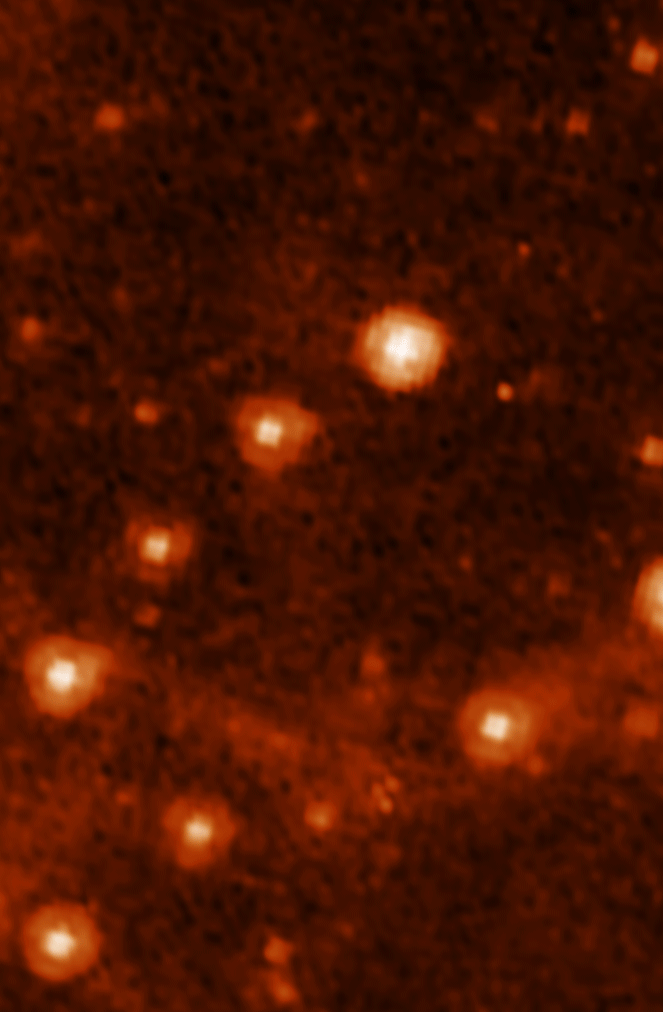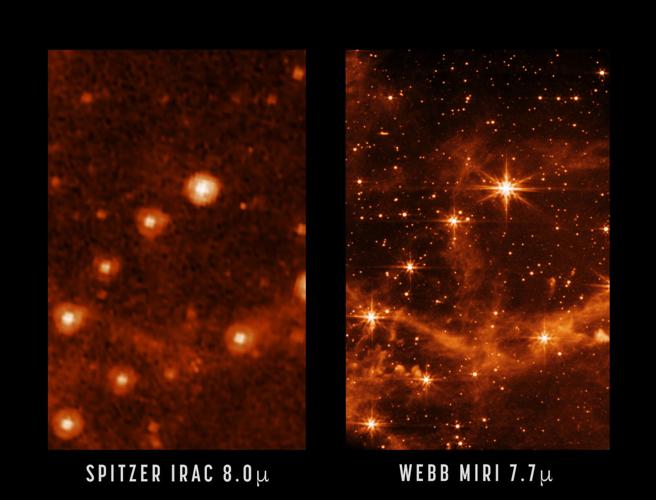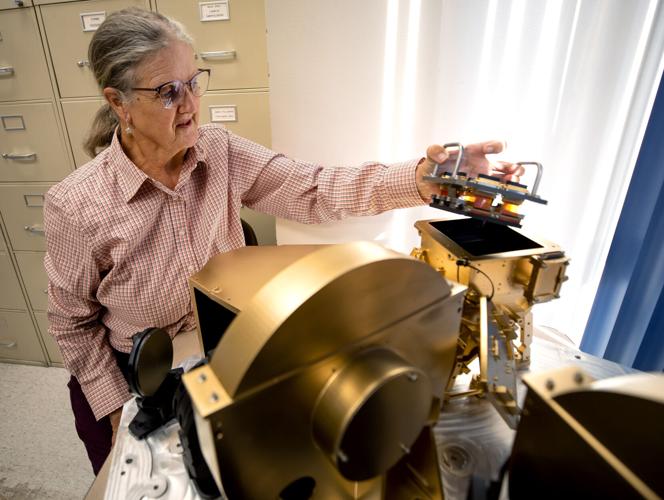NASAÔÇÖs new James Webb Space Telescope is still about two months away from its first science observations, but it is already dazzling people back on Earth with what it can do so far.
Astronomers showed off a comparison on Monday between one of WebbÔÇÖs infrared test images of the Large Magellanic Cloud, a small satellite galaxy of the Milky Way, and the same view captured by NASAÔÇÖs previous infrared observatory, the Spitzer Space Telescope.

An infrared image of the Large Magellanic Cloud taken years ago by NASA's retired Spitzer Space Telescope dissolves into a recent, far sharper test image of the same satellite galaxy taken by the Mid-Infrared Instrument on the new James Webb Space Telescope.
What looks like blurry orange and white blobs in the Spitzer image sharpen into distinct stars and whispy clouds of gas when viewed using WebbÔÇÖs Mid-Infrared Instrument, or MIRI.
University of Arizona Regents professor of astronomy George Rieke helped design MIRI and now serves as science team lead for the instrument. His wife, fellow U of A regents astronomy professor Marcia Rieke, led the team that built WebbÔÇÖs primary optical sensor, and she continues to serve as chief scientist for the device known as the Near Infrared Camera or NIRCam.
People are also reading…
ÔÇ£ItÔÇÖs not until you actually see the kind of image that it delivers that you really internalize and go ÔÇÿwow!ÔÇÖÔÇØ said Marcia Rieke during MondayÔÇÖs NASA briefing on the calibration process for the $10 billion telescope. ÔÇ£Just think of what weÔÇÖre going to learn.ÔÇØ
Scientists finished alligning each of WebbÔÇÖs 18 mirror segments late last month and are now in the commissioning phase for the spacecraftÔÇÖs various instruments.
The first science observations are slated to begin in July, but NASA is keeping the identity of WebbÔÇÖs first official target a secret for now.
The telescope, launched into space nearly three decades after the Hubble Space Telescope, is designed to explore the cosmos both near and far, from the atmospheres of moons orbiting planets in our own solar system to the most distant observable galaxies in the early universe.
Launched into space from a South American spaceport on Christmas Day, Webb is the largest and most powerful astronomical observatory ever sent into space.
Each of its individual mirror segments is bigger than the entire mirror on Spitzer, with improved detectors that will allow astronomers to peer into the infrared sky with unprecedented clarity and depth.
It reached its final destination on Jan. 24: an orbital point around the sun that will keep it in line with Earth at a distance of about 1 million miles.
Once the science starts, U of A researchers should find themselves in the thick of it. NASA has allotted 13% of WebbÔÇÖs total observing time to the university, the most of any astronomy center in the world.
The Associated Press contributed to this report. Contact reporter Henry Brean at hbrean@tucson.com or 573-4283. On Twitter:















